Algae refers to a heteromorphic group of organisms which are capable of doing photosynthesis as they contain chlorophyll as their primary pigment and lack a sterile covering around their reproductive cells. The members are grouped together as they share some common characteristics. However, they are not necessarily closely related in evolution perspective. It is really fascinating that an apparently simple group of organisms like algae possesses such diverse nature in both morphological and physio-chemical characteristics.
Often the phycologists become puzzled as they start defining the term algae. It is so diverse that putting all the common characters to define algae in a single sentence is almost an impossible task. To support such claim, we can recall two world famous phycologists’ statement: “Sometimes even the professional botanists and biologists find algae embarrassingly elusive of definition” (Bold and Wynne).
Due to its diverse nature, the algal classification is also a difficult task. Some schools of scientists prefer certain characters of algae while the other choose the remaining ones. Again some botanists opt for the modern phylogenetic system. It has been quite unequivocal by now that as the science of classification and nomenclature is becoming more diverse, the algal classification is getting more complicated.
However, today we are going to compare three classifications as proposed by:
- F. E. Fritsch (1935, 1945).
- H.C. Bold and M.J. Wynne (1978, 1985 (the one given in 1985 is followed here))
- R.E. Lee (1999, 2008 (the one given in 2008 is followed here))
Nomenclature of Algae
- Division: phyta
- Class: phyceae
- Order: ales
- Family: aceae
- Genus: generally a Latin name
- Species: generally a Latin name
So, as the words like Chlorophyta, Phaeophyta and Rhodophyta end with ”phyta”, they are equivalent to the status of a division; words like Chlorophyceae, Phaeophyceae and Rhodophyceae end with ”phyceae” and are therefore equivalent to the status of a class and so on.
Good to know
- Sub-division: phytina
- Sub-class: phycidae
- Sub-order: inales
- Sub-family: oideae
Evolution of Algal Classification
The history of classification of algae dates back to Carolous Linnaeous, who first classified plants into 25 classes based on “sexual system” considering the number of stamens and carpels in their flowers. Out of his 25 classes, in “Cryptogamia” which contains plants with “concealed reproductive organs”, Linnaeus proposed 14 algal genera of which only 4, Conferva, Ulva, Fucus and Chara are now considered as algae (Dixon 1973 ).
W. H. Harvey is considered as one of the first algologist who proposed the first descriptive algal classification. Since W. H. Harvey several classifications have been proposed based on a variety of characters including morphological, physiological, biochemical and more recently the molecular characters have also been considered. The main characters which are being widely used for algal classification are:
I. Photosynthetic Pigments: Chlorophylls, Carotenoids (Carotenes and Xanthophylls), Phycobilins
II. Biochemical nature of food reserve.
III. Cell wall composition
IV. Flagella
Basis of classification
Classification is the systematic grouping of organisms into categories on the basis of relationships between them, where the relationship can be either evolutionary or structural.
In case of classifying algae, the taxonomists consider rarely one, and generally a combination of a few or more of the following characters.
In normal microscope-
- Types of pigments
- Types of reserve food materials
- Number and position of flagella
- Cell structure
Under electron microscope-
- Presence and structure of flagella
- Flagella hair
- Flagella swellings
- Eyespot
- Chloroplast Endoplasmic Reticulum (CER)
- Thylakoid grouping
- Phycobilisomes (out of 450-760 mm range)
- External scales
- Pit connection
- Silification vesicles
- Theca or scales
- Projectiles – To hold something/prey/to move.
- Nuclear structure and division
Through biochemical analysis-
- Presence and structure of algal pigments
- Storage products
- Cell wall constituents
Schools of Thought
Regarding the algal classification, there are three schools of thought:
First school of thought
(supported by Papenfuss, 1946; Bold and Wynne)
The algae should be divided first into several divisions (i.e. phyta such as Chlorophyta, Phaeophyta etc.) and then in each division, there should be different classes (i.e. phyceae such as Chlorophyceae, Phaeophyceae etc.).
Why separate divisions?
Supporters of the first view classified algae into divisions as they considered:
- Pigments differ in different phytas (=divisions).
- Product of photosynthesis is different in different divisions.
Base of classification
- Pigmentation
- Storage product
- Cellular organisation
- Cell wall chemistry
- Flagellation
Second school of thought
(supported by Fritsch, 1935, 1945 and his followers)
Algae is itself equivalent to a division, and therefore it can only be further divided into classes (i.e. phyceae) and not into divisions (i.e. phyta). So in this school of thought there is no word like ”phyta”.
Base of classification
As the following characters are common in all algae, Fritsch and his followers are disinclined to form any divisions rather considered Algae itself as a division.
- Chlorophyll-a is ubiquitous to all algae, and so there is definitely a common origin from a common source. Therefore they all belong to the same group.
- Internal structure of flagella is similar in all.
- Product of assimilation may be different but the process of assimilation is same in all.
- Methods of reproduction are almost common in all.
Third school of thought
(supported by Lee, 1999)
Whereas the above two classifications were proposed basing on some physical and chemical characteristics of algae, there is a third classification as proposed by Robert Edward Lee based on the evolutionary features. This is the most modern classification scheme of algae.
The basis of classification also includes-
- Thyllakoid band
- CER membrane
- Phycobilins
- Chlorophyll
- Carotenoid pigment
Bold and Wynne’s classification
(First school of thought)
Bold and Wynne (1985) recognized ten divisions of algae retaining the nomenclature given by Papenfuss (1946), except for blue-green algae. They considered Cyanophyceae as a division and called it Cyanochloronta where as Papenfuss had included it in phylum Schizophyta as a class.
Divisions as proposed by Bold and Wynne.
- Cyanophyta (Blue Green Algae)
- Prochlorophyta (Single genus: Prochloron)
- Chlorophyta (Green algae)
- Charophyta (Stone worts)
- Euglenophyta
- Phaeophyta (Brown algae)
- Chrysophyta (Golden and yellow green algae)
- Pyrrhophyta (Dinoflagellates)
- Cryptophyta
- Rhodophyta (Red algae)
Fritsch’s classification
(Second School of thought)
Fritsch (1935, 1945 and his followers) opined that algae is itself equivalent to a division, and therefore it can only be divided into classes (=phyceae). So there is no word like phyta (e.g. Chlorophyta, Rhodophyta etc.) in classification proposed by him and his followers. There are in total eleven classes in Fritsch’s classification.
Eleven classes as proposed by Fritsch:
The classes are based on
- Pigmentation.
- The metabolic or assimilatory food products.
- Types of flagella.
- Chlorophyceae (Isokontae, Green algae)
- Xanthophyceae (Heterokontae, Yellow-green algae)
- Chrysophyceae
- Bacillariophyceae (Diatom, Yellow or golden brown algae)
- Cryptophyceae
- Dinophyceae
- Chloromonadineae
- Euglenineae
- Phaeophyceae (Brown algae)
- Rhodophyceae
- Myxophyceae (Cyanophyceae, Blue-green algae)
R.E. Lee’s classification
(Third school of thought)
- Prokaryotic algae (Cyanophyta)
- Eukaryotic algae-with chloroplast surrounded only by the two membranes of the chloroplast envelope (Glaucophyta, Rhodophyta and Chlorophyta)
- Eukaryotic algae-with chloroplast surrounded only by one membrane of chloroplast endoplasmic reticulum (Euglenophyta and Dinophyta)
- Algae which have two membranes of Chloroplast Endoplasmic Reticulum (Cryptophyta and Heterokontophyta)
The following table provides a useful scheme of the differences among the three schools of thought which may come handy while studying the three classifications together.
N.B: Our team is working on the differences. We will add more of them shortly.
| Characteristics | Bold and Wynne’s classification | Fritsch’s classification | Lee’s classification |
| Position of Algae and divisions | Algae is divided into divisions | Algae is itself a division | Algae is divided into groups which include divisions |
| Number of divisions | 10 | No divisions | 15 divisions in 4 groups |
| Number of classes | – | 11 | – |
| BGA | Divided into two divisions | In a single class | In a single group |
| Position of BGA and Prochloron | As two separate divisions known as Cyanochloronta and Prochlorophyta | In the eleven numbered class called Mycophyceae | Alone in the first group called the prokaryotic algae |
| Classification basis |
|
|
|
| Division: Glaucophyta | Absent | Present | |
| Division: Dinophyta | Absent | Present | |
| Division: Charophyta | Present | Absent | |
| Diatoms | In class Bacillariophyceae under division Chrysophyta | In an independent class Bacillariophyceae | |
The above discussion avouches (=certify) well that the science of classification is a complicated one and in case of algae it has reached its apogee (=highest point). Besides, we believe the more detailed study on algae would give rise to more accurate (or inaccurate?) classifications.
This article will be incomplete if the author doesn’t quote the words of Prescott (1969) about the complexity of classification schemes:
…..ideas concerning classification systems continually vary as more and more facts are disclosed which require modifications of the previous concepts. Further, we may come to realize that as long as there are three men on the earth, there will be at least two different interpretations of the facts, possibly three, and we may find that none of them is correct…
 Plantlet The Blogging Platform of Department of Botany, University of Dhaka
Plantlet The Blogging Platform of Department of Botany, University of Dhaka
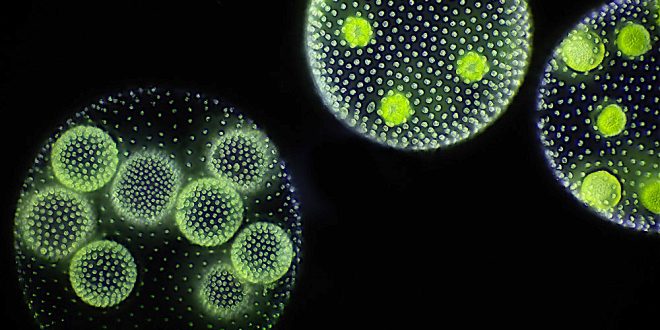

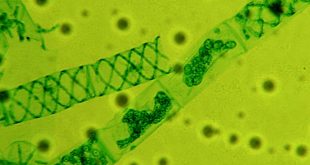
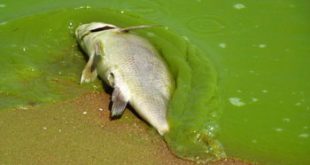
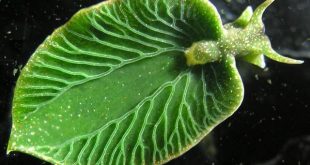
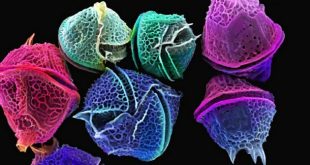
best wishes always!